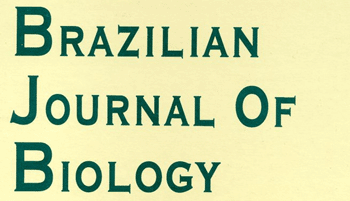Resumo em Português:
As aves representam um grupo ecologicamente importante nas interações animais-flores na região Neotropical, onde desempenham respeitável papel na polinização de diversas angiospermas. Entretanto, pouco se conhece sobre a organização das comunidades e as interações bióticas entre animais/plantas em ambientes urbanos. Como exemplo, S. nilotica, planta exótica africana amplamente explorada para fins de paisagismo urbano, têm sido pouco estudada em relação às suas interações com aves. Assim, analisamos quais espécies de aves visitam S. nilotica, o tipo de exploração dos recursos nectarívoros pelas aves e o comportamento antagonístico intra e interespecífico das aves que visitaram esta planta. O estudo foi realizado de maio de 2008 a abril de 2011, nos meses de florescimento de S. nilotica (abril a maio). Foram totalizadas 148 horas de amostragem e identificadas 16 espécies se alimentando de néctar, 13 beija-flores (Trochilidae), Aratinga aurea (Psittacidae), Tangara palmarum (Thraupidae) e Coereba flaveola (Coerebidae). As aves mais frequentes foram Eupetomena macroura (96,88%), Chlorostilbon lucidus (78,13%) e Coereba flaveola (59,38%). A frequência de visitas foi maior no período matutino, exceto para E. macroura, H. longirostris e T. palmarum. A maioria das aves obteve o néctar através de rompimento na base da corola (orifícios), com exceção de A. aurea que obteve néctar pela abertura superior entre as pétalas em 100% de suas visitas e H. furcifer (95,65%), F. fusca (95%) e A. nigricollis (70,27%). Eventos antagonísticos foram mais acentuados em E. macroura (58,65%), Florisuga fusca (11,04%) e Amazilia fimbriata (10,87%), sendo E. macroura dominante durante os eventos. Os resultados demonstram que E. macroura é a ave dominante em S. nilotica e a que se apresenta com maior potencial para sua polinização. Entretanto, as outras aves contribuem parcialmente como potenciais polinizadoras de S. nilotica. Muito provavelmente isto é resultado de uma interação recente entre as aves neotropicais e esta planta Africana.
Resumo em Inglês:
Birds play crucial role on the pollination of many plants. However, little is known about the interactions between nectarivorous neotropical birds and exotic Angiosperms. S. nilotica is an exotic African plant widely used in Brazilian urban landscaping. However, it has been poorly studied in relation to its interactions with Neotropical birds. In this way, we studied the feeding nectar strategies and the interspecific antagonistic behaviours among nectarivorous Neotropical birds to verify the bird contributions to the S. nilotica pollination. The study was conducted from May 2008 to April 2011, but only in months of S. nilotica flowering (April to May). From 148 hours of sampling we identified 16 species feeding nectar on S. nilotica: 13 hummingbirds (Trochilidae), Aratinga aurea (Psittacidae), Tangara palmarum (Thraupidae) and Coereba flaveola (Coerebidae). Eupetomena macroura was the most frequent (96.88%), followed by Chlorostilbon lucidus (78.13%) and Coereba flaveola (59.38%). Most birds obtained nectar by punching at the base of the corolla, except for A. aurea that obtained the nectar by the upper opening of the petals in 100% of its visits, Heliomaster furcifer (95.65%), F. fusca (95%) and A. nigricollis (70.27%). Despite E. macroura also obtains nectar only by punching at the base of the corolla, it showed the highest level of legitimate visits. Antagonistic events were more frequent in E. macroura (58.65%), Florisuga fusca (11.04%) and Amazilia fimbriata (10.87%), being E. macroura dominant in all events. These results showed E. macroura plays an important role on this plant being the most important bird as a potential pollinator. Moreover, other birds contribute partially to the S. nilotica pollination. Most probably it is a result of recent Neotropical bird interactions with this African plant.
